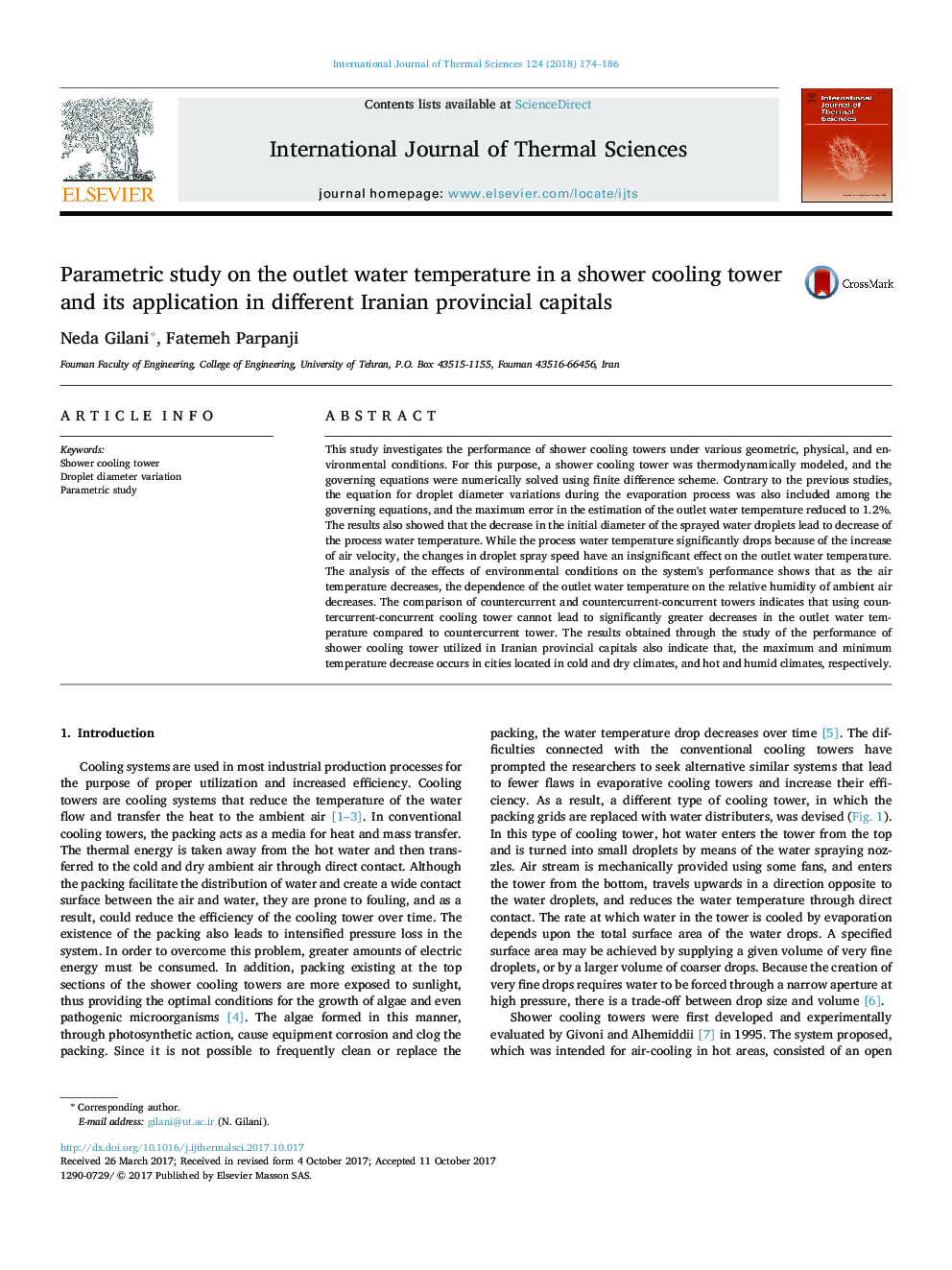| Article ID | Journal | Published Year | Pages | File Type |
|---|---|---|---|---|
| 4995120 | International Journal of Thermal Sciences | 2018 | 13 Pages |
Abstract
This study investigates the performance of shower cooling towers under various geometric, physical, and environmental conditions. For this purpose, a shower cooling tower was thermodynamically modeled, and the governing equations were numerically solved using finite difference scheme. Contrary to the previous studies, the equation for droplet diameter variations during the evaporation process was also included among the governing equations, and the maximum error in the estimation of the outlet water temperature reduced to 1.2%. The results also showed that the decrease in the initial diameter of the sprayed water droplets lead to decrease of the process water temperature. While the process water temperature significantly drops because of the increase of air velocity, the changes in droplet spray speed have an insignificant effect on the outlet water temperature. The analysis of the effects of environmental conditions on the system's performance shows that as the air temperature decreases, the dependence of the outlet water temperature on the relative humidity of ambient air decreases. The comparison of countercurrent and countercurrent-concurrent towers indicates that using countercurrent-concurrent cooling tower cannot lead to significantly greater decreases in the outlet water temperature compared to countercurrent tower. The results obtained through the study of the performance of shower cooling tower utilized in Iranian provincial capitals also indicate that, the maximum and minimum temperature decrease occurs in cities located in cold and dry climates, and hot and humid climates, respectively.
Keywords
Related Topics
Physical Sciences and Engineering
Chemical Engineering
Fluid Flow and Transfer Processes
Authors
Neda Gilani, Fatemeh Parpanji,
